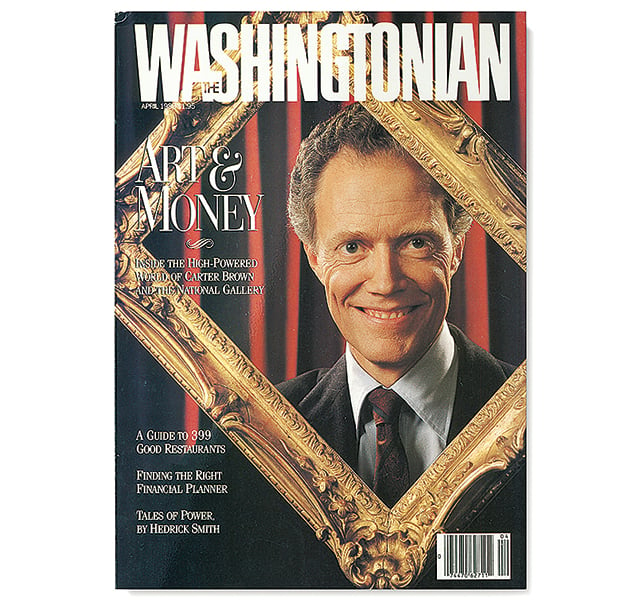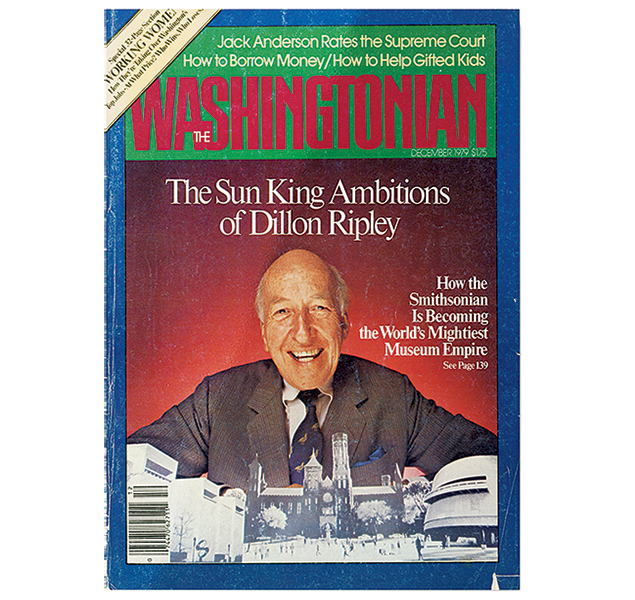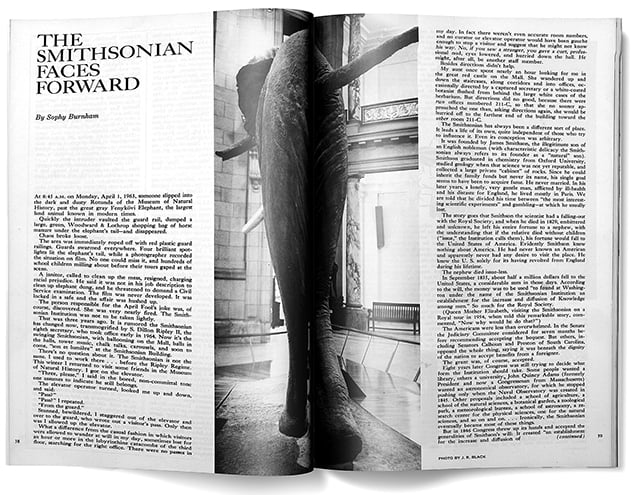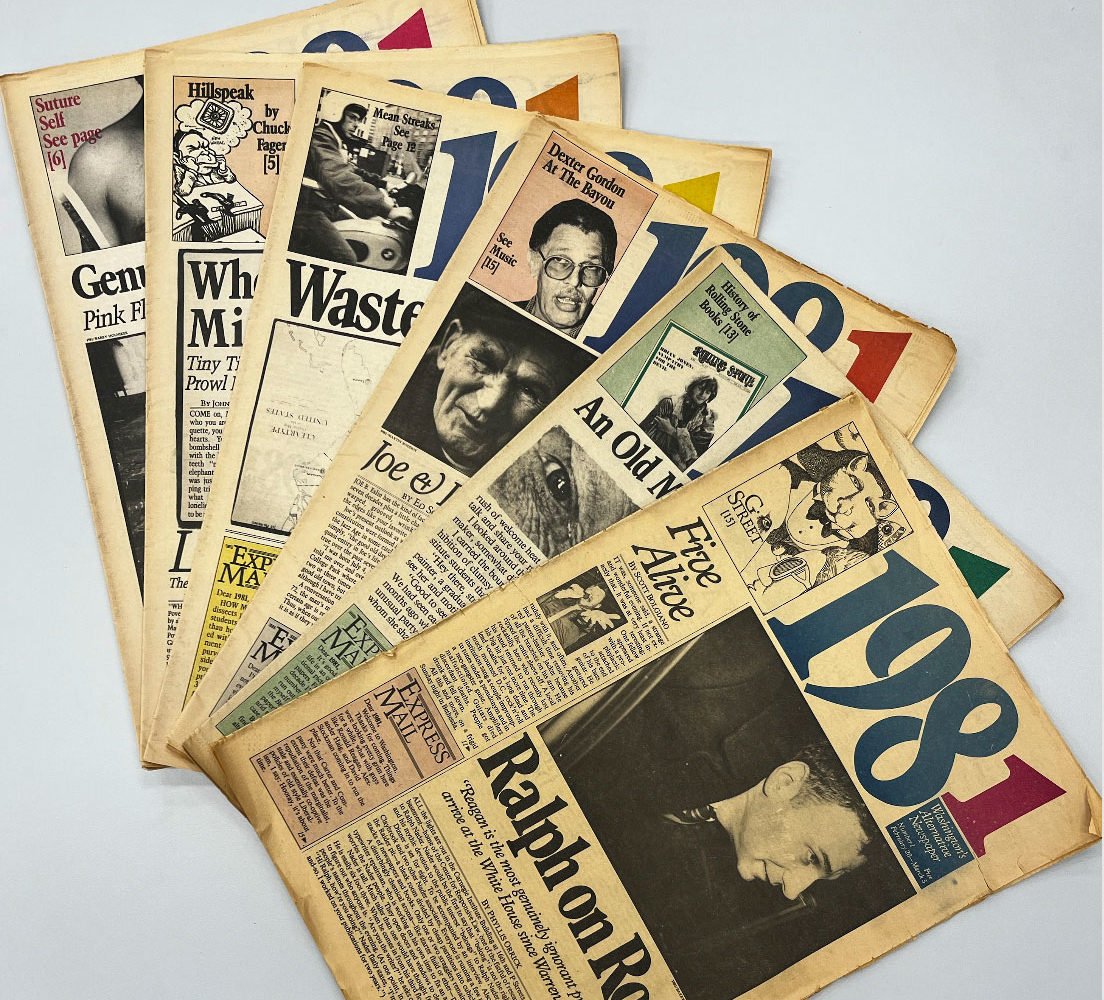A new leader for the Smithsonian was inaugurated in July. David J. Skorton is now part of a museum scene vastly bigger and better funded than it was a half century ago. Here are some highlights from 50 years of coverage of politics, ambition, and history on the Mall.

“[National Gallery director J. Carter] Brown also has shown few qualms about doing everything within reason to generate publicity for exhibitions. All the techniques are so familiar that it is difficult to remember that they have been used at the gallery for only about fifteen years. Giant, colorful banners are now hung across the gallery’s entrance. Corporate-sponsored advertisements appear in magazines, in the subway, and on bus stops. . . .
“Brown is well aware that this kind of promotion is considered unseemly by some museum purists, but that’s a tradeoff he’s willing to make: ‘The promotion of blockbusters helps make people aware of art, and to that extent I believe there can never be enough. The minus is the effect it has on art critics who no longer feel they have anything to discover . . . but if a broad audience cottons to our shows, I feel that’s all to the good.’ “
-“Art and Money,” 1988

” ‘The Smithsonian itself was a Sleeping Beauty,’ [says S. Dillon Ripley, secretary of the Smithsonian Institution]. ‘Its potential as a force for public education wasn’t sufficiently recognized. What it really needed, I thought, was somebody to come in and say, “Look, we’re just going to go out and get the things we should have been trying to get years and years ago.” ‘
“Ripley did precisely that.
“. . . Although the trend had begun under his predecessor, Ripley constantly pushed his curators to make Smithsonian exhibits livelier and more comprehensible. He liked such things as the smell of chocolate piped into a nineteenth-century confectionary exhibit and the sound of a train whistle that went with the locomotive. Not all of this showmanship was well received by the Museum’s staff, some of whom saw it as a bit too Barnumesque. ‘Attendance records are the new goal, the populist carnival is pitched, and mere entertainment has set in,’ one said.”
-“The Sun King Ambitions of Dillon Ripley,” 1979

“The story goes that [Englishman James] Smithson the scientist had a falling-out with the Royal Society; and when he died in 1829, embittered and unknown, he left his entire fortune to a nephew, with the understanding that if the relative died without children . . . his fortune would fall to the United States of America. . . .
“The nephew died issue-less.
“In September 1835, about half a million dollars fell to the United States, a considerable sum in those days. According to the will, the money was to be used ‘to found at Washington under the name of the Smithsonian Institution an establishment for the increase and diffusion of Knowledge among men.’ So much for the Royal Society.
“(Queen Mother Elizabeth, visiting the Smithsonian . . . in 1954, when told this remarkable story, commented, ‘Now why would he do that?’)”
-“The Smithsonian Faces Forward,” 1966

“Brown, surely among the least warm and passionate workers in the building, is ironically the one most driven to overcome the scholarly and educational deficiencies of the past. . . . Oddly enough, this fundamentally doleful nineteenth century figure goes to great pains to picture himself as an up-to-date gay dog. Hence, the introduction of rock music to the gallery [and] the hoopla over the ‘relevant’ African art exhibit . . . . He even has allowed a modest sampling of hipster slang to appear in his conversation. A phrase like ‘my bag’ in a Carter Brown sentence has roughly the effect of an obscenity tucked into a Pope couplet. . . .
“This is not to say that the gallery’s future . . . is going to be any more open or folksy. The Mellons and Brown will doubtless continue to preserve their nineteenth century pattern of privacy and absolute authority. Certainly, both the Mellons and Brown want as little federal control as possible. . . . And as matters now stand a Congressional takeover of the gallery would risk debasement of an island of quality in the Federal City.”
-“The Rise of Carter Brown,” 1971
This article appears in our September 2015 issue of Washingtonian.









